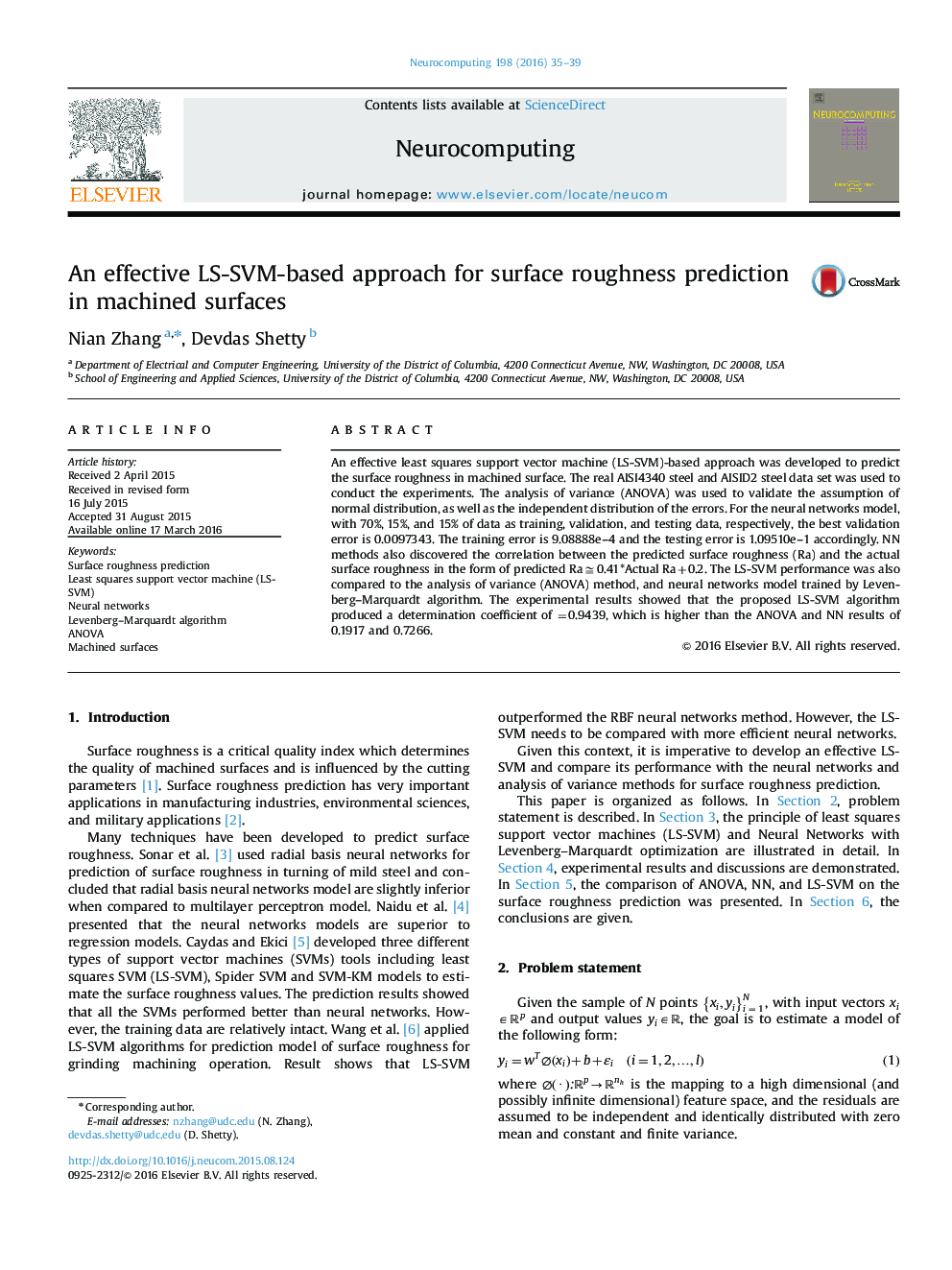| Article ID | Journal | Published Year | Pages | File Type |
|---|---|---|---|---|
| 411396 | Neurocomputing | 2016 | 5 Pages |
An effective least squares support vector machine (LS-SVM)-based approach was developed to predict the surface roughness in machined surface. The real AISI4340 steel and AISID2 steel data set was used to conduct the experiments. The analysis of variance (ANOVA) was used to validate the assumption of normal distribution, as well as the independent distribution of the errors. For the neural networks model, with 70%, 15%, and 15% of data as training, validation, and testing data, respectively, the best validation error is 0.0097343. The training error is 9.08888e–4 and the testing error is 1.09510e–1 accordingly. NN methods also discovered the correlation between the predicted surface roughness (Ra) and the actual surface roughness in the form of predicted Ra≅≅0.41*Actual Ra+0.2. The LS-SVM performance was also compared to the analysis of variance (ANOVA) method, and neural networks model trained by Levenberg–Marquardt algorithm. The experimental results showed that the proposed LS-SVM algorithm produced a determination coefficient of =0.9439, which is higher than the ANOVA and NN results of 0.1917 and 0.7266.
